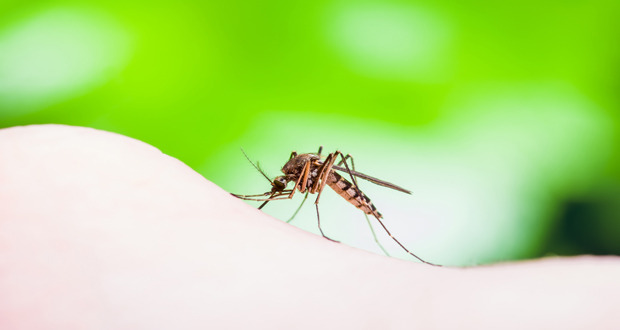Bringing malaria diagnostics into the fold
5 Apr 2019 by Evoluted New Media
Malaria is one of the biggest killers on the planet. Early diagnosis is considered an incredibly important part of defeating the disease, but could folded sheets of wax paper really bring affordable and reliable field diagnosis? We catch up with Professor Jonathan M. Cooper to find out… Your device can’t really be as simple as some folded paper can it? Yes, it can. In our original version we incorporated the sample preparation and fluorescence detection onto a single strip of folded paper. The fluorescence was read out by a flash-light and photographed on a mobile phone. This was used in India to explore veterinary infections. We found the fluorescence difficult to quantify in the field.
In our new work in PNAS we still use paper folding for the sample preparation but then transfer the sample onto a lateral flow assay – similar to a pregnancy test – and measure the amplicons with a simple semi-quantitative test that can be easily interpreted by healthcare workers as a YES or NO.
Aren’t there already good diagnostics for malaria? There is a class of immunoassay tests – known as RDTs which advertise high performance. It is now well-established that RDTs perform worse in the field than under controlled conditions in laboratories. For example, some tests may quote 99% sensitivity and 99% specificity, but when eight of these tests were compared with PCR and microscopy (in a peer-reviewed study, Wanja et al., Malaria Journal 2016 15:456) they performed less well.
This study in fact involved eight commercial RDTs which were tested on 500 participants recruited in the field in Kenya and compared them both to microscopy and PCR. The performance of the evaluated RDTs against the “gold-standard” PCR, was described as “moderate”. Overall, compared to PCR, the eight devices sensitivities (to detect malaria parasites) of 71.1–75.4 %, specificities of 80.3–84.4 %, with a positive predictive value of 80.3–83.3 %, and a negative predictive value was 73.7–76.1 %. We found very similar figures – the RDT device that we used in the PNAS study had a specificity of around 82% (better than those in the Wanja study), but our negative predictive value was similar, meaning that when the RDT test shows negative – most often it is wrong.? This is obviously not ideal when informing treatment.
Our isothermal test performed ten times better than the RDTs and is comparable to the gold standard PCR – which needs to be run in a lab. Whilst RDTs miss around 20 positive samples in every 100 tested, we miss around 2.
And, of course, malaria is just one disease we are working to develop assays for. Other finger-prick? DNA blood tests include HCV, Leptospira, Brucella and Schistosomiasis. Last week, working in Eastern Uganda we also demonstrated the test could be performed using a mobile phone to control the assay as well as collect and store the data.
Have you tested your approach in the field? Yes, the tests were performed in schools in under-served rural communities in Uganda, that have no power or running water.
Is this a realistic solution for the harsh environments in which it’ll be needed? The devices and the assays are stable even in the high humidity and high temperatures in equatorial Uganda.
Do you think it’ll be taken up widely enough for it to have an impact? We already have staff and students from Makerere University visit our laboratories and learn these methods and they are now making the devices for their own studies – including veterinary and human testing.? We are now beginning to work with the Ugandan Industrial Research Institute and Makerere University to establish a sensor fabrication facility in Kampala. ?We are also establishing collaborations in Tanzania and Rwanda. The technology involves hot wax printing and laser cutting – so is relatively low-tech and suitable for scaling into production. We have advanced some of the methods and these now include reagent immobilisation on the paper strips, and as I say above – the use of mobile phones.
 Professor Jonathan M. Cooper is Vice Principal for Knowledge Exchange at The University of Glasgow
and holds The Wolfson Chair of Bioengineering along with the position of ERC Advanced Investigator
Professor Jonathan M. Cooper is Vice Principal for Knowledge Exchange at The University of Glasgow
and holds The Wolfson Chair of Bioengineering along with the position of ERC Advanced Investigator





